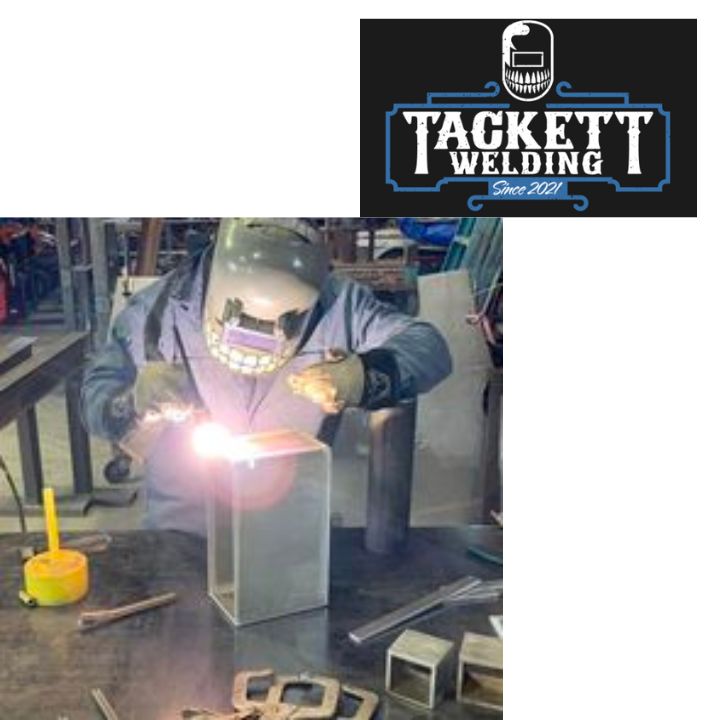What Is TIG Welding Used For?
by siteadmin

What is TIG Welding Used For?
TIG welding allows you to join a wide range of metal materials with precision. It also requires a high level of dexterity. TIG (tungsten inert gas) welding relies on a non-consumable tungsten electrode to create an electric arc, which is then shielded by inert gas—typically argon.
Since no flux is used and no slag forms, TIG welding provides clean, precise welds for almost any metal thickness. It is commonly used for chromoly, aluminum, and nickel alloys.
1. Automotive and Aerospace
TIG welding works well with a variety of metals and alloys used in automotive and aerospace applications. It's also ideal for smaller projects like gunsmithing, tool boxes and ornamental pieces. It's the process of choice for delicate work where details are important.
A TIG machine allows the operator to control the heat of the arc by using a foot pedal. This helps them avoid the thermal shock that can occur when introducing or removing heat to the metal being welded. This is particularly important when TIG welding sensitive materials like 4130 chrome-moly, the popular alloy that's used in racing cars for its combination of strength, weight and ductility.
Unlike MIG, which uses a wire that acts as both electrode and filler material, TIG welding requires a non-consumable tungsten electrode that points the electric arc to the workpiece. The arc is shielded by a flow of inert gas, typically argon. The tungsten electrode can be sharpened or rounded to enhance its ability to point the arc and control the flow of filler material.
2. Construction
TIG welding, also known as GTAW, is a precise and delicate process that works with thinner materials like aluminum and stainless steel alloys. It’s ideal for projects that require a high level of precision and beauty.
The TIG process uses a non-consumable tungsten electrode and inert gas to create an electric arc between the electrode and the work piece. This arc melts the surfaces together and creates a weld pool. The welder adds filler metal by hand to the arc, or through a separate gun that feeds a cold wire into the weld puddle.
The TIG process is used for many different kinds of metals, including titanium, nickel, copper, aluminum and their alloys. It’s often used in aerospace and aircraft applications, as well as in construction and manufacturing projects because of its durability and ability to weld in a variety of positions. For example, vehicle fenders are often TIG welded to prevent corrosion. This weld method is also popular with artists who use it for sculptures.
3. Furniture
There are a lot of different welding processes, but TIG (tungsten inert gas) welding is the clear winner for projects where quality matters more than quantity. This precise process uses a combination of an AC/DC power source, non-consumable tungsten electrode and inert gas to create an electric arc between a pair of metal pieces to form a weld.
TIG welding is versatile enough to work with many metals, including dissimilar ones. And since only the required amount of filler metal is added to the welding puddle, it produces clean welds with no spatter around them.
TIG is the process of choice for gunsmithing, toolboxes and ornamental metalwork like sculptures. It can also be used in metal fabrication shops for high-quality finishes on welded parts and equipment. For example, this TIG welded shop stool made with scrap steel chain from BM Sculptures makes for a heavy-duty addition to your workshop. The welding was done with a foot-operated variable amperage control to prevent thermal shock, which can damage sensitive alloy metals like 4130 chrome-moly used in race car chassis.
4. Metalworking
While MIG welding is great for bulk material, TIG is the preferred technique when precision matters. This process offers cleaner, more fine-tuned welds and can even be performed without filler metal.
This level of detail comes from the operator’s manual control over the heat in the arc. While this requires a high degree of specialized skill, it also produces welds that are stronger and more attractive than those produced by other methods.
TIG welding can be used to join a wide range of materials. This includes both ferrous and non-ferrous metals. It is especially useful for joining dissimilar metals such as carbon steel and copper alloys.
This type of welding can be complex and takes time to master. Additionally, the equipment needed can be expensive. However, with the proper training and a bit of practice, it can be a rewarding and lucrative career. If you want to pursue a career in TIG welding, contact a local community or vocational school to learn the necessary skills.
https://www.tackettwelding.com/
Tig Welding/Custom Fabrication
What is TIG Welding Used For? TIG welding allows you to join a wide range of metal materials with precision. It also requires a high level of dexterity. TIG (tungsten inert gas) welding relies on a non-consumable tungsten electrode to create an electric arc, which is then shielded by inert gas—typically argon. Since…
Recent Posts
- Your Premier Choice for Montana Commercial Roofing
- Your Premier Choice for Montana Commercial Roofing
- Junk Removal Temecula: Your Trusted Partner for Clean and Clutter-Free Spaces
- Junk Removal Temecula: Your Trusted Partner for Clean and Clutter-Free Spaces
- Pest Control Industry with Cutting-Edge Website Design Services
